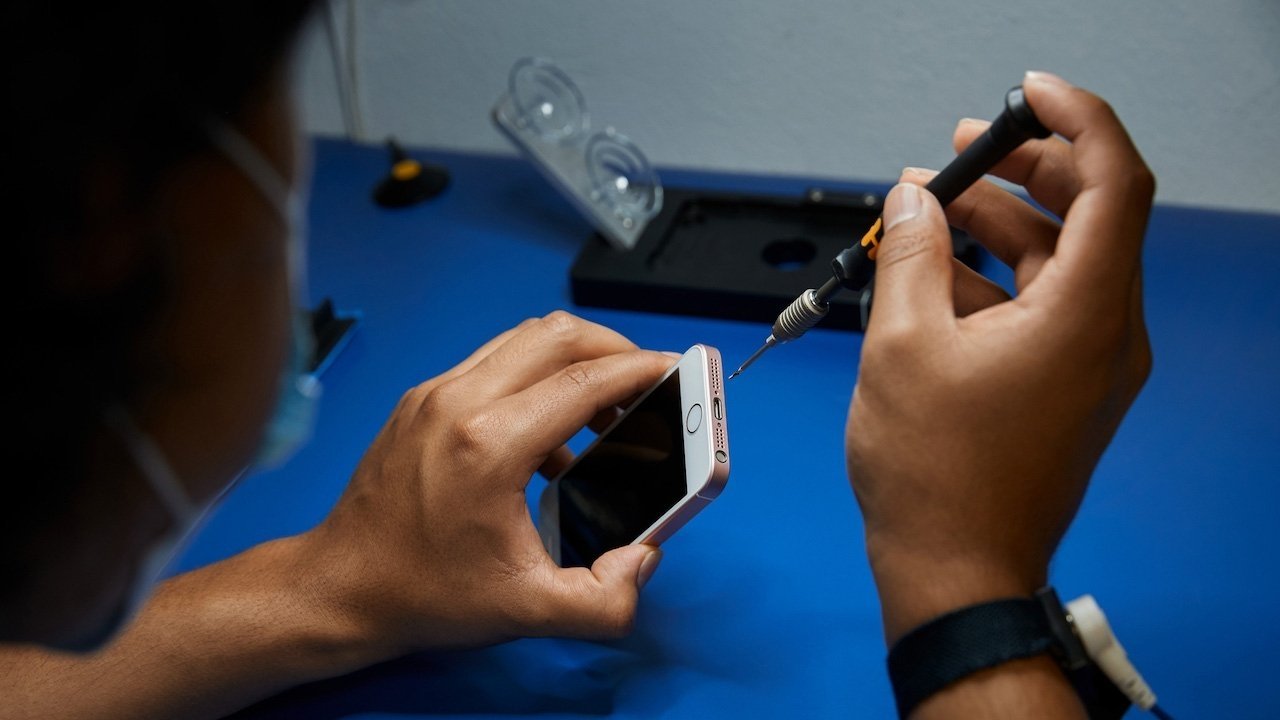It's impossible to compete with Apple, says third-party iPhone repair shops
Due to lengthy delays in parts processing and steep costs, third-party iPhone repair providers say that there is no practical way that they can compete with Apple's repair chain.
After facing increased pressure from legislators, Apple created its independent repair provider program in 2019. It gave small companies an Apple-sanctioned way to repair customers' devices, such as the iPhone, using genuine Apple parts and tools.
However, according to The Guardian, repairers feared that the move wasn't made in good faith. Instead, many thought it was done to avoid right-to-repair legislation put forth by the government.
Repairers in both the US and Australia now say that Apple's slow response times and high part costs make it nearly impossible to compete with Apple's in-house repair program.
How Apple service and part supply works
For most authorized service centers, few — if any — parts are kept in stock. The remainder is ordered after the diagnostic process is complete and shipped by FedEx to the repair shop.
The shop performs the repair and must return the "core" failed part to Apple for examination, refurbishment, return to service stock, or both. And they don't get credited for the broken part return until Apple assesses the part.
In the case of a warranty repair, Apple picks up the tab for the difference between the core price and the non-return price. Otherwise, the shop pays the bill, which is then passed to the customer.
Core prices are often up to 75 percent of the cost of the whole part ordered new. So, part accountability is important, and Apple has put prohibitions in place to prevent shops from selling directly to customers due to abuse in years gone by.
Shops selling parts to users are grounds for losing Apple-authorized status — which can be financially deadly.
The cost of labor
One repairer told The Guardian that the average repair takes an hour to an hour and a half. So if that company were to charge the same rate Apple charges customers for repairs, the company only profits about $60.
After subtracting overhead, like shop rent and labor, the third-party company actually loses money in the process.
And according to the Australian Communications Consumer Action Network (AACAN), customers also suffer.
As the cost of living in Australia skyrockets, many customers are choosing to try to repair devices rather than replace them outright. However, the delays and repair costs don't always make repair a feasible option, either.
"If you can't repair your phone in an affordable way or your device in an affordable manner, then that's a serious impediment to being able to actually engage in so many services, now the government and private entities are pushing so many services online," AACAN executive Andrew Williams told The Guardian.
The Right to Repair movement, which has begun to pick up steam over the last several years, has faced many challenges. The primary issue is that there is no consensus on what Right to Repair actually entails.
 Amber Neely
Amber Neely











 Wesley Hilliard
Wesley Hilliard
 Andrew Orr
Andrew Orr





 William Gallagher
William Gallagher







